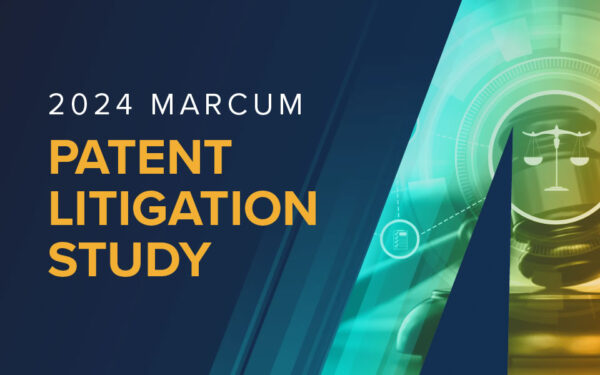Final and Proposed PFIC Regulations as Applicable to Non-Insurance Foreign Entities
On December 7, 2020, the Internal Revenue Service issued final and proposed regulations related to Passive Foreign Investment Companies (“PFIC”). Simply stated, a PFIC is a foreign corporation (“tested foreign corporation,” “TFC”) that satisfies either of the following two tests:
- 75% or more of the TFC’s gross income for the tax year is passive (“Income Test”), or
- At least 50% of the average percentage of the assets of the TFC during the tax year produces or is held for the production of passive income (“Asset Test”).
A complex set of rules applies to determine what is included/excluded from the definition of passive income for purposes of the Income Test, how assets are valued for the Asset Test, and in a tiered or integrated structure what income or assets should be taken into account to meet the parameters of these two tests. Assuming a TFC is a PFIC, another set of complex direct/indirect attribution rules are applied to determine if the U.S. person is the owner of that PFIC. If a U.S. person is considered an owner of a PFIC, the consequences include denial of lower capital gains tax, denial of qualified dividend treatment, and interest and penalties dating back to the years investment began in the PFIC and much more. While investors may believe that these rules do not concern them, the reality is very different, with many investors unwittingly becoming subject to this draconian PFIC tax regime (e.g., by investing in certain foreign ETFs or other foreign portfolio assets).
We therefore urge our readers to pay attention to the following discussion of the recent PFIC regulations and review their foreign investments portfolio for a potential PFIC trap! Below is a discussion of the final 2020 regulations as applicable to non-insurance companies.
Attribution of Ownership through Partnership, S Corporation, Estate or Non-grantor Trust (“pass thru entity”)
Under 2019 proposed regulations, the U.S. owner of a pass-through entity was attributed an indirect ownership of PFIC stock held by the entity only if that U.S. owner owned at least 50% of the entity. The final regulations do not require this 50% pass-through ownership in order to make a U.S. person an indirect owner of the PFIC, thus subjecting many more U.S. owners of pass-through entities to the PFIC rules.
Top-down and Successive Ownership Approach to Attribution of Ownership through Tiered Ownership Structures
Where a PFIC is not directly held by the U.S. owner, but ultimately held through a tiered ownership structure, the final regulations retain the top-down approach to attribution and introduce a new successive application to determine if the U.S. owner owns stock in a PFIC and, therefore, is subject to the PFIC regime. For example, let us assume that U.S. partner B owns 99% of a U.S. partnership, which in turn owns 100% of foreign corporation X, which in turn owns 100% of foreign corporation Y, which in turn owns 100% of another foreign corporation Z that is a PFIC. Using the top-down approach starting with the U.S. owner, and proceeding through the chain of ownership, the U.S. partner is considered to indirectly own 99% of PFIC Z. Combined with the repeal of the 50% pass-through entity rules discussed above, the final regulations attempt to subject more U.S. owners to the PFIC regime.
Passive Income Test for Financial Institutions and Insurance Companies
Given the passive nature of income (e.g., interest, dividends) derived by financial institutions, they are more likely to be treated as PFICs under the PFIC Income Test. Under 2019 proposed regulations, two ways to mitigate this result were: (1) under IRC Section 954(h), which, subject to meeting strict parameters, treated income from active banking, financing or similar business of a controlled foreign corporation and its affiliates as non-passive income for purposes of the PFIC test; and (2) under IRC Section 1297(b)(2)(A), which allowed income from an active conduct of a banking business by a bank licensed in the U.S. (or to the extent provided in regulations, any other corporation) to be treated as non-passive income. The 2020 final regulations take away the available mitigation under IRC Section 954(h), thus making many more financial institutions susceptible to the PFIC regulations. At the same time Treasury acknowledges the need to retain the mitigating effects of IRC Section 954(h) and to that extent also issues proposed regulations for further comments by practitioners.
Treatment of Gains from Certain Transactions
Under proposed regulations, in determining whether a foreign corporation met the Income Test and was, therefore, a PFIC, certain items of income (e.g., from certain sale of partnership interest, from commodities transactions, from currency exchange transactions) were included on a net basis (rather than on a gross basis). In an integrated business conducted through multiple subsidiaries, this net amount was determined for each relevant subsidiary separately, thus overstating the passive income for purposes of PFIC Income Test. In recognition of this fallacy, the 2020 final regulations provide that the net gain/income for purposes of the PFIC Income Test to determine PFIC status of a TFC must be calculated by netting income/gain across the TFC, its look-through subsidiaries and certain look-through partnerships (generally defined as 25% owned).
Income Subject to Related Party Look-thru Rules
IRC Section 1297(b(2)(C) characterizes dividends, interest, rents, and royalties received by a foreign corporation from a related party as non-passive to the extent these items of income are non-passive to such related party for purposes of the PFIC Income Test. The final regulations provide: (1) additional guidance on how to apply the threshold requirement to be treated as a related party; (2) how the related party rules for treating dividends, interest, rents, and royalties as non-passive (versus passive) interact with look-through corporation or look-through partnership rules, and (3) how these items of income are allocated for purposes of the PFIC Income Test so as to avoid conflict with the unrelated party active income rules.
CFC Status of Target Foreign Corporation
For measuring the value of assets for purposes of the Asset Test, the final regulations define a controlled foreign corporation (“CFC”) without applying downward attribution that now occurs through the repeal of IRC Section 958(b)(4). The repeal of IRC Section 958(b)(4) had an unintended consequence of classifying certain foreign corporations as CFCs. Non-application of this repeal to PFICs may be beneficial because for purposes of the Asset Test, a non-CFC can measure its assets based on fair market value, rather than adjusted basis. This can help those TFCs that own valuable self-created goodwill and other intangible assets to fall out of the PFIC Asset Test.
Applicability Dates
The applicability date varies with the regulations being applied (final or proposed).
- A taxpayer may apply final regulations (other than PFIC insurance exceptions) to any open tax year of the taxpayer, provided that all the rules are applied consistently with respect to that TFC for that year and all succeeding taxable years. However, if in applying the final regulations to open years, a TFC that was a PFIC ceases to qualify as a PFIC, then the taxpayer seeking to end PFIC status must make a “purging election” or request the consent of the IRS to make a late “purging election.”
- The proposed regulations 1.1297-1(c)(1)(A), concerning the application of IRC Section 954(h) to banking and financial institutions, may be relied on for tax years prior to December 31, 2020.
- With the new 2020 proposed regulations, there are now three sets of guidance: outstanding Notice 89-81, Proposed Re. Section 1.1296-4 and the 2020 proposed regulations. A taxpayer can choose to rely on any of these three, as long as they are consistently applied across all tax years.




















